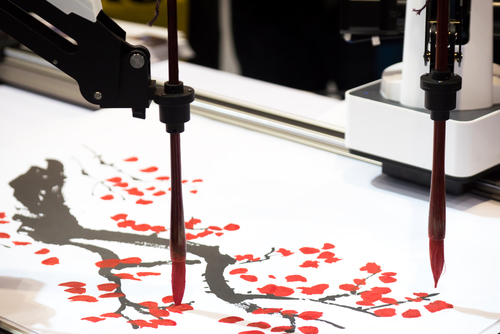STEM and STEAM are all the rage these days, and for good reason–the skills students take away from STEM and STEAM classes help them succeed in advanced education classes, training programs, and the workforce.
One junior high school in Texas has made it a mission to engage all students in different aspects of STEAM, because, as the educators say, students are propelled further into STEM exploration when they use their creative drive.
Those STEAM experiences are important regardless of students’ eventual careers. Even if students don’t pursue jobs in tech fields like computer programming or engineering, the skills they learn are easily applied in other fields.
At Celeste Junior High School in the Celeste Independent School District in Texas, students are engaged in a variety of STEAM experiences in an effort to help build those critical skills.
(Next page: STEAM resources for classrooms)
During a TCEA presentation, Julie Dillard, the district’s library media specialist and technology director, and Shayla Lewis, a math and technology applications teacher at Celeste Junior High, offered tips and resources to “STEAM up” classrooms.
Coding activities
Students use coding programs to create projects, and they use screencasting software to record what they’re doing for both teachers and peers to reference in the future.
1. Code.org‘s coding courses for teachers and students offer lessons aimed at different skill levels and interests.
2. Using MIT’s Scratch, students draw objects or images and animate those images using code. Images and animations can be tied to different subjects. For instance, students coded and animated a ship sailing west as part of a unit on European travel to the United States.
3. Code Combat is a coding game that increases in difficulty as students move through and master the various levels and objectives. Teachers can create math challenges for students to master in order to move through the game.
4. Khan Academy offers free courses on computer science and computer programming.
5. Minecraft is easily used across core subjects, and teachers often task students with using a Minecraft world and Minecraft materials to create buildings or other objects related to lessons. For instance, students might use Minecraft to recreate historical sites or buildings for a history unit, or they might create worlds based on those described in novels. “Even before the lesson is taught, they’re already wondering what they’re going to create based on what they’re learning. It makes the lesson hit home when they know they’re creating something,” Lewis said.
“This is student-driven. They figure it out,” Dillard said. “We have Minecraft on our desktops in school, and a lot of them have their own Minecraft accounts and take it home and work there. You have them explore, they do their own thing, and you sit back and facilitate.”
Programming practice
6. Robots such as Dot and Dash, along with Ozobot‘s selection, help students get started with programming and give them advanced challenges as their knowledge grows.
The Ozobot is nice when not every student has a device or when students are at a beginning programming level, according to Dillard. Students can program the robot, which holds markers, to create different patterns and images.
Students program Dot and Dash using iPad Wonder Apps.
“Once the wheels start turning, the kids think of all kinds of things they can do–coding, measuring, integrating the robots with math. It’s OK to not know exactly what you want to do with the robots at first,” Lewis said.
Multimedia projects
8. Students used the TouchCast Studio app to create engaging and interactive video presentations. They chose a historical figure from their history classes, found a Discovery Education video about that person, and wrote a research paper in their English classes. They went a step further and, using TouchCast studio and a green screen, students dressed the part, found an image or work of art relevant to their historical figure’s importance, and created an interactive video describing their historical figure’s prominence, notoriety, or contributions.
9. Teachers used Google Earth and Minecraft, along with TouchCast Studio, for a project integrating English, technology, and math classes. Students researched historical houses and hotels, wrote a paper on their chosen building, and then had options for creating a model of the building. Some students built an actual model using math to determine scale, while others built replicas of their historical buildings inside Minecraft, using Google Maps to illustrate measurements and scale.
- Friday 5: Universal Design for Learning - April 19, 2024
- Educators love their edtech, but want more training - April 18, 2024
- Friday 5: College and career readiness - April 12, 2024


